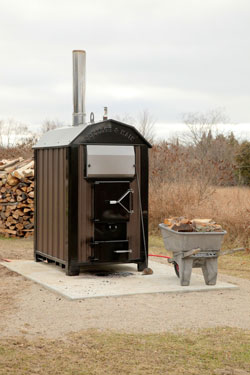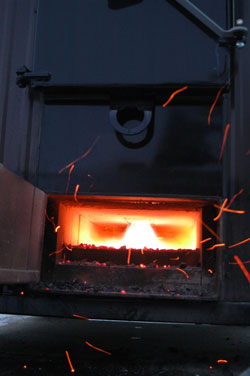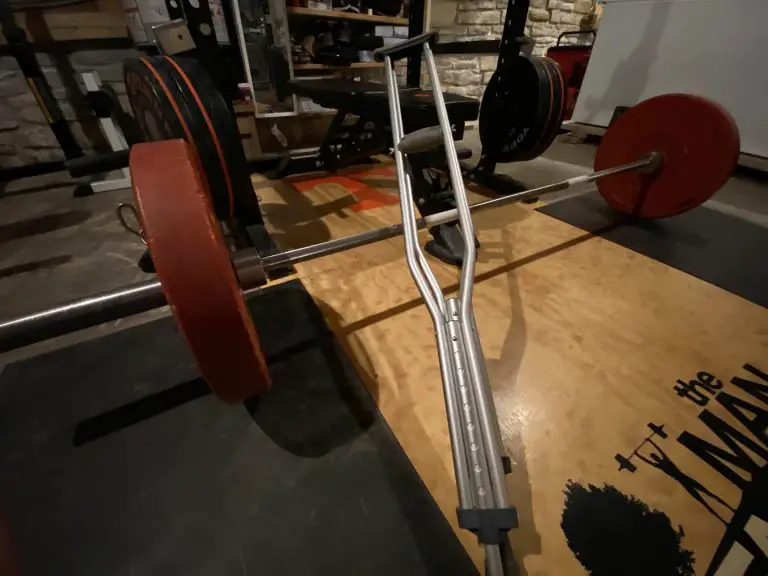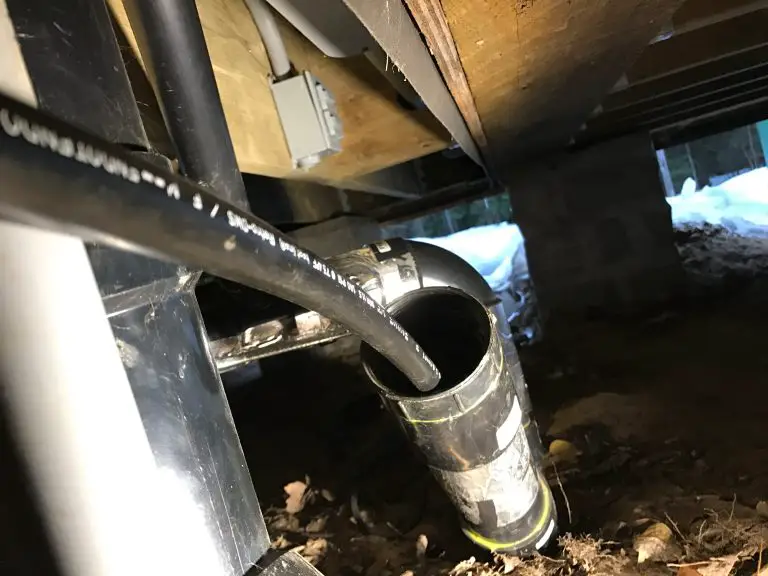 Green, sustainable, inexpensive space heating and domestic hot water is what I wanted for my house and workshop, and it was early 2010 when I began researching outdoor wood furnaces as an option for making this happen. A week before Christmas 2011, I lit the first oak and maple fire in the unit I bought and installed. Outdoor wood furnaces have been around for decades, but it’s only in the last few years that new combustion technology means these systems now burn clean enough to be considered truly green.
Green, sustainable, inexpensive space heating and domestic hot water is what I wanted for my house and workshop, and it was early 2010 when I began researching outdoor wood furnaces as an option for making this happen. A week before Christmas 2011, I lit the first oak and maple fire in the unit I bought and installed. Outdoor wood furnaces have been around for decades, but it’s only in the last few years that new combustion technology means these systems now burn clean enough to be considered truly green.
All outdoor wood furnaces look pretty much the same from a distance. Imagine a small, metal building, like a half-size garden shed. There’s a door at one end that opens into a firebox. Energy from burning wood heats water to about 180ºF in an insulated tank within the building, where this water is available to be circulated to and from structures to be heated via underground pipes. The hot water can be used in radiators, infloor heating pipes or to warm air used in forced air heating systems.
Outdoor furnaces move the fire, ash and danger of heating with wood outside. They also have large fireboxes that handle big wood that’s easier to cut and split than smaller stuff. These are the two main advantages that got me thinking about outdoor wood furnaces in the first place, but as I soon discovered, there are two technical issues when it comes to assessing the quality of any particular unit.
- First, what percentage of heat energy from the wood actually makes it to the water in the storage tank?
- And second, how cleanly does the unit burn?
When the guy who works at the little country hardware store where I buy my stuff heard I was installing an outdoor furnace, he wondered why out loud. “Don’t those outdoor furnaces burn a rainforest worth of wood each year?” Well yes, they do. Or at least some models do. The difference between efficient and inefficient outdoor furnaces means burning either 15 cords of wood a year or 30, and as I discovered, something called a fire-tube boiler is key to frugal operation.
 The outdoor furnace I bought is made by a Canadian company called Portage and Main (800-561-0700), and their fire-tube boiler design is one reason I chose them. Multiple hollow steel tubes run through the boiler tank itself, surrounded by water. Exhaust gases are directed through these tubes where they transfer huge amounts of heat to the water before heading up the chimney. This fire-tube design originated in 1804, and was an enduring feature of marine and locomotive boilers in their time. Fire-tubes are even used in modern industrial boilers today. The outdoor furnace at my place has 20 horizontal fire tubes going through the main part of the boiler, and six more vertical ones coming up from the firebox. All in all, this translates into almost 100 feet of heat transfer tubes, in addition to the interior surface of the firebox itself. Many other outdoor wood furnaces I looked at rely only on the inside surface of the firebox for heat transfer, and have no fire tubes at all. And while this accounts for part of the difference between efficient and inefficient outdoor wood furnaces, the most impressive difference goes back to something bizarre that happened during World War II.
The outdoor furnace I bought is made by a Canadian company called Portage and Main (800-561-0700), and their fire-tube boiler design is one reason I chose them. Multiple hollow steel tubes run through the boiler tank itself, surrounded by water. Exhaust gases are directed through these tubes where they transfer huge amounts of heat to the water before heading up the chimney. This fire-tube design originated in 1804, and was an enduring feature of marine and locomotive boilers in their time. Fire-tubes are even used in modern industrial boilers today. The outdoor furnace at my place has 20 horizontal fire tubes going through the main part of the boiler, and six more vertical ones coming up from the firebox. All in all, this translates into almost 100 feet of heat transfer tubes, in addition to the interior surface of the firebox itself. Many other outdoor wood furnaces I looked at rely only on the inside surface of the firebox for heat transfer, and have no fire tubes at all. And while this accounts for part of the difference between efficient and inefficient outdoor wood furnaces, the most impressive difference goes back to something bizarre that happened during World War II.
When gasoline supplies dried up in Europe, enterprising farmers discovered that they could run the piston engines in tractors, trucks and even city buses on firewood, through a process called gasification. Dry, seasoned hardwood was sealed in metal canisters mounted on these vehicles after the wood was set on fire. The volatile gases from the smoldering wood was directed from the canisters directly into engines where it burned well enough to keep machinery running. This same process of wood gasification is now part of the cleanest outdoor furnaces, and you’ve got to see it to believe it.
 After a fire is lit in the main firebox, the sealed door is closed to contain all smoke. A small electric fan forces air into the firebox to feed the flames. The only place for the resulting smoke and gases to leave is downward, through a small, rectangular hole in the bottom of the firebox. By directing the wood gases downwards, through the bed of hot coals, it causes them to burn at temperatures over 2000ºF inside a brick-lined chamber. Open the door it’ll remind you of a blast furnace. Inside this chamber you’ll see the roar and glow of what looks like a bright, natural gas flame. And in a sense, it is a very natural sort of gas indeed, made entirely of the smoke and volatile wood gases being created in the chamber above. The EPA has certified the model I bought – the Optimizer 250 – to be more than 90% cleaner than traditional outdoor boilers. And besides cleaner air, this higher efficiency also means more heat from less wood, all from a fire that burns downwards instead of up.
After a fire is lit in the main firebox, the sealed door is closed to contain all smoke. A small electric fan forces air into the firebox to feed the flames. The only place for the resulting smoke and gases to leave is downward, through a small, rectangular hole in the bottom of the firebox. By directing the wood gases downwards, through the bed of hot coals, it causes them to burn at temperatures over 2000ºF inside a brick-lined chamber. Open the door it’ll remind you of a blast furnace. Inside this chamber you’ll see the roar and glow of what looks like a bright, natural gas flame. And in a sense, it is a very natural sort of gas indeed, made entirely of the smoke and volatile wood gases being created in the chamber above. The EPA has certified the model I bought – the Optimizer 250 – to be more than 90% cleaner than traditional outdoor boilers. And besides cleaner air, this higher efficiency also means more heat from less wood, all from a fire that burns downwards instead of up.
No matter how efficient wood heating equipment is, it’s still a lot more work than dialing up a thermostat on a conventional heat source. But when you consider the time it takes to earn the after-tax money to keep that thermostat fed to warm you with oil, propane or electricity, efficient and clean-burning wood heating starts to look much more inviting. And besides, an outdoor wood boiler is the next best thing to having my own little steam locomotive in the backyard.












